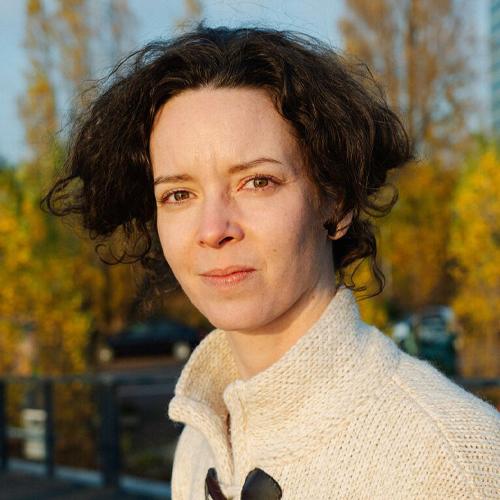‘I like art that questions how tech interacts with our world and psyche’
 |
Emma Beauxis-Aussalet is an Assistant Professor of Ethical Computing at the Vrije Universiteit Amsterdam, and co-manager of the Civic AI Lab at ICAI. Besides her work or past art studies, she has practised photography, poetry, and piano. She is an avid translator of Baudelaire poems, and collector of music instruments. |
Five questions, five answers
1. How would you explain your work to a five year old?
My job is to be a scientist. What I do is answer questions. The answers I give must be about what is real, and not about what is imagined. The questions I ask myself are about computers. I wonder how well they work, and when they do not work well. I also wonder if they do not work well for specific people, while if they work well for other people. This situation would not be fair.
2. What do you believe is the most interesting trend or development on the crossroads of art and tech?
Recently, the most popular trend in art and tech is to use generative AI, to make images or videos by giving written instructions. It is interesting that it enables more people to create images. It is a tool for visual expression that anybody can use, and it can be empowering for a lot of people. It is also interesting to see what kind of terminology and human-computer language people might develop to get the images they seek.
I really appreciate the means of expression and exploration that such tools provide. Yet, personally, this trend is not the most interesting to me because I am more interested in what art discusses, than in what tech or medium it uses. I like art that questions how tech interacts with our world and psyche, and art that expresses the human emotions and cultures that arise through tech.
It does not matter to me what tech is used in artworks, if any. When digital tech is used, it is important to me to understand the specific way an artist used the tech for a particular artwork. I need to understand why a tech was chosen or modified, and which role it took in the artist’s process. This is important to me to understand the human touch and intention of an artwork.
I am probably saying this because I am a geek whose job is to scrutinise computer systems. In any case, we can engage with art without knowing anything about the tech it may have used.
3. Do you think manual art will disappear altogether in the future, and everything will be designed and made by AI fed machines, computer software, or robots?
I certainly do not believe this. I rather believe that we will appreciate manual art even more. Even for art using digital tech, parts of an artist’s process will continue to include manual tasks, and I believe that the manual labour of an artist will become a more prominent part of their artworks.
4. What is your favourite artwork of this edition and why?
I really like the whole exhibition, and personally, I particularly like the artworks that reinvent the human body (such as Future You by Universal Everything, Is it really you? by Studio MAST, Cell Phone by Liam Campbell, Percipio by Gáspár Battha, or 0,12 by Aram Bartholl). They make me wonder about how humans reinvent themselves through technology. They show how technology can limit us (as in 0,12, Cell Phone or Is it really you?) but also how technology can also empower our imagination, and offer new means of expression and new ways of being (as in Percipio and Future You).
My favourite artwork is ATLAS by Jon Voss. It is a colossal cyborg that supports rather old-fashioned houses on its back. It shows me a hybrid human society, where machines are part of our habitat. It is interesting that the houses are old-fashioned, and empty. It makes me wonder about how authentic or gregarious humans remain, despite their technology. It is also interesting that the cyborg has its arms open like a bird taking flight. It shows me the ambitions humans place in their own progress through machines. At the same time, the cyborg has no fully-formed legs. So it makes me wonder about how technology can actually hinder our progress, by anchoring us into stereotyped behaviors that are arbitrarily fixed by machines, and that make little room for diversity.
5. What are things visitors should pay extra attention to?
This is a hard question. I would rather ask a visitor what caught their attention, than tell them what to pay attention to. Yet there are some things I would point at, and would love to discuss with any visitor: What did the artworks make you feel or think about your own life through technology? Did you feel limited or empowered, reinvented or predetermined? Did the artworks help you understand how technology affects us, and what you would want technology to do, or not to do?
